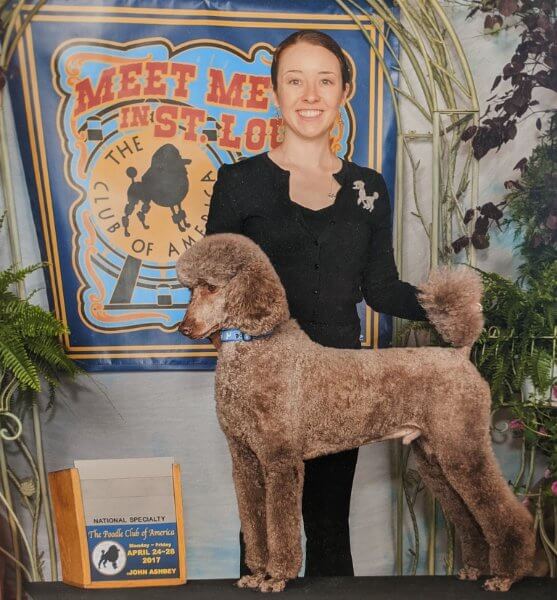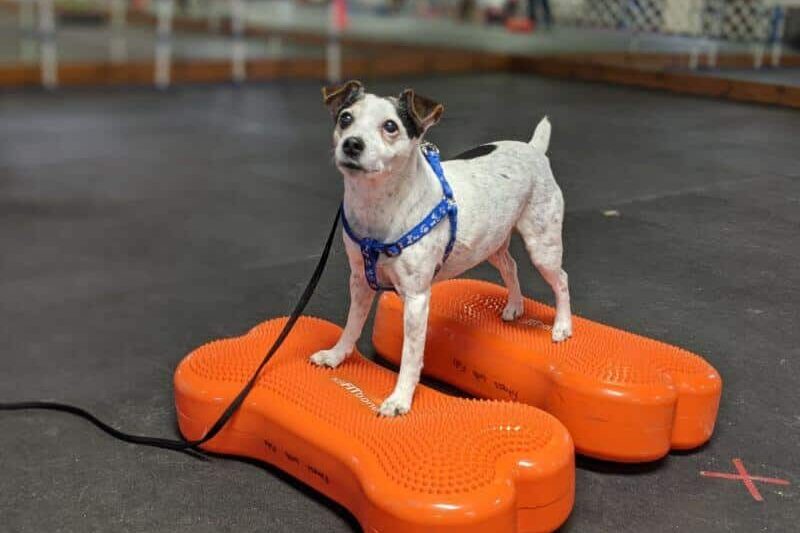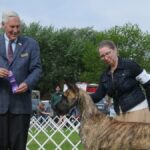Sometimes we want to teach our show dogs something flashy besides running around the ring, but what if that would do more harm? We want to keep their bodies strong, but not only because of their looks.
In Conformation, standing for long periods can be really taxing on your dog’s body. So, having a strong core is essential for good posture. The core is the body’s powerhouse and it’s important to keep your dog’s core strong in order to stand in the correct stance while being stacked for long periods of time.
A common trick that we like to teach our dogs (because it’s cute and flashy) is to “sit pretty.” But this is quite a controversial exercise because it puts a lot of pressure on their spine and risks the chance of them tipping over while balancing in that pose. Most people think that holding the pose is working their abdominal muscles, but it’s actually the lifting up into the pose that begins to contract the abs. Certain breeds (like any of the long-backed breeds like the Corgis, Basset Hounds, Great Danes, etc.) are more prone to injuries while in this pose, so it’s best to avoid this exercise even though it’s a very cute trick.
There are better exercises to choose from that will engage the core muscles better and in safer positions. Plus, most show people don’t want their dogs to be sitting much anyway, right?
Learning how to stack your dog is essential to performance. We want a dog’s feet in the correct positioning, and in order to maintain that positioning, your dog needs to have a strong core and quads that aren’t too tight for proper posture. If the muscles are too tight (or the core is too weak) they will not be able to lengthen and maintain their stance for long. A great core exercise for dogs is using planks.
Planks are having your dog stacked on a raised piece of equipment. Using stability pieces of equipment (equipment filled with air-like balance discs, propels, paw pods, peanuts, etc.) will test your dog’s core strength effectively and efficiently, and with less risk of injuries. (Note that height = might. The taller the piece of equipment, the more advanced is the exercise and the more room there is for injuries from getting on and off.) Simply ask your dog to work on standing on the equipment and complete a few reps for about a minute.
Once your dog is confident, you can start adding progressions like looking side-to-side and up-and-down while they stay in their plank positioning. These simple directional movements will shift their weight and they will have to stabilize to maintain their positioning. It’s harder than it looks! Go slow with these movements and be intentional with your hand placement and speed.

A well-conditioned dog in the ring has an exercise routine outside of the ring. To be able to naturally get into the correct stance—and hold it without discomfort—is what we’re looking for, as well as a nice gait. If your dog is showing signs of not being able to hold the stance, or their gait is off, it could be a sign of muscle tightness, lack of exercise, too much exercise, or something else going on that you’ll want to find the cause of—pronto. Having a well-rounded team of professionals like a canine masseuse, chiropractor, and personal trainer can be essential to their performance.
So, let’s forget about those tricks and treats from October and head into November with a little Planksgiving challenge! Practice those plank weight shifts all month long for a few minutes each day. Share your before and after photos with us @fitnesswithfido.fit on Facebook and please feel free to reach out for help!










